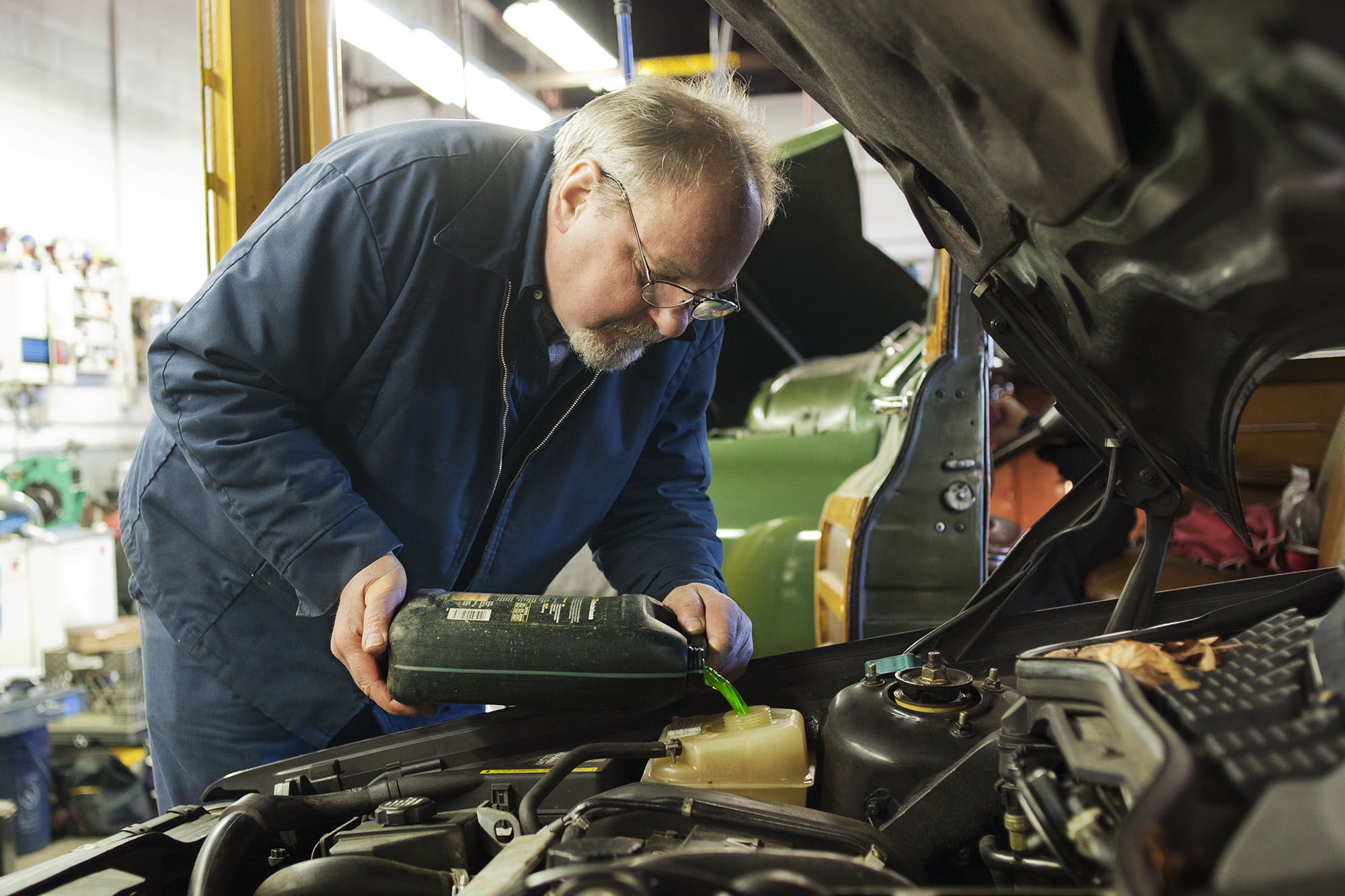Are Antifreeze and Coolant the Same Thing?
Mixing antifreeze and water produces engine coolant, which offers a wider range of temperature protection than either fluid on its own.
 Getty Images
Getty Images
You may have heard the terms antifreeze and coolant used interchangeably, and generally speaking, they mean the same thing to most people. Technically, however, they are not identical.
Pure antifreeze is a fluid designed to keep your engine from freezing in cold weather and help inhibit corrosion. Coolant is usually a general term for a mixture of antifreeze and water, although it could be pure water. In the world of semantics, all antifreeze is coolant, but not all coolant contains antifreeze.
Antifreeze Absorbs Heat but Doesn't Work Alone
Antifreeze primarily consists of ethylene glycol or propylene glycol, either of which helps to raise your coolant's boiling point to resist summer heat as well as prevent winter freeze-ups. Think of antifreeze as the raw component of your engine's cooling system, which circulates fluids in a loop through the engine, heater core, and radiator, to help the components cope with hot and cold temperatures and to provide cabin heat.
Antifreeze also contains chemicals designed to limit rust and corrosion within your vehicle's cooling system, including the radiator and water pump. Depending on the formulation, it can include organic or inorganic acids and be colored anything from pink to orange to green.
Coolant Is Often a Blend of Antifreeze and Water
Engine coolant is a mixture of antifreeze and water, often at a 50-50 blend. Though early vehicles used only water as coolant, their cooling systems were prone to boiling over and the water could freeze solid during cold snaps. Coolant in most modern vehicles is a mixture that both amplifies freezing protection and extends the high-temperature capabilities of the antifreeze base fluid.
The Combination Extends Protection at Temperature Extremes
A half-and-half mixture of antifreeze and water is designed to protect an engine from freezing at temperatures as low as minus 35 degrees Fahrenheit.
Combining water and antifreeze also boosts the mixture's boiling point to 223 degrees Fahrenheit, which is higher than water alone and similar to the operating temperatures inside a running engine. Pure antifreeze has 35% less heat-transfer capability than a water-antifreeze coolant mix.
That water-antifreeze mixture can be created by adding equal amounts of each fluid by hand during a fill up or by purchasing premixed 50-50 coolant.
When It's Really Cold, More Antifreeze Can Help
Depending on where you live, it might be helpful to modify the percentage of antifreeze and water to offer some extreme wintertime engine protection. Mixing 70% antifreeze with 30% water, for example, can extend freeze-proofing to minus 84 degrees Fahrenheit, which ought to suffice outdoors, overnight, even in Alaska or northern Minnesota.
Though modern antifreeze mixtures are designed for longer life, a rule of thumb is that your radiator coolant mix should be changed every 30,000 miles or two years, whichever comes first, before its heat-regulating properties wear out.
Written by humans.
Edited by humans.
 Andy Stonehouse
Andy StonehouseAndy Stonehouse literally fell into the world of auto writing while working as a ski-town journalist, and has not looked back since. A childhood spent dealing with the eccentricities of a 1976 MG Midget has made any subsequent auto experience a more safe and reliable drive. He has been blessed with nearby mountain trails and snowy roads in Colorado to do TV-adventure-styled test drives on a weekly basis.
Related articles
View more related articles